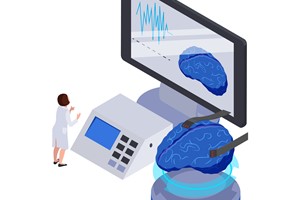A small feasibility study funded by the National Institutes of Health (NIH) has demonstrated that an innovative device, which adjusts its stimulation based on the body’s brain activity, could provide continuous and enhanced treatment for Parkinson’s disease (PD) symptoms in certain patients. This advanced approach, known as adaptive deep brain stimulation (aDBS), represents a significant improvement over the traditional deep brain stimulation (DBS) method, which has been a standard treatment for PD and other neurological disorders for many years. The study found that aDBS was considerably more effective at controlling PD symptoms than conventional DBS treatments.
Deep brain stimulation involves the implantation of fine wires, or electrodes, into specific regions of the brain. These electrodes deliver electrical signals that can alleviate symptoms of brain disorders like PD. However, traditional DBS provides a constant level of stimulation, which can sometimes lead to unwanted side effects, as the brain’s needs for stimulation vary over time. Adaptive DBS addresses this issue by utilizing data directly from the brain and employing machine learning algorithms to adjust the stimulation levels in real-time based on the patient’s changing needs.
The study, led by Dr. Philip Starr and his colleagues at the University of California, San Francisco, involved four participants who were already receiving conventional DBS treatment. The participants were first asked to identify their most bothersome symptoms that persisted despite ongoing DBS therapy, often reporting involuntary movements or difficulty initiating movement. Following this, the participants were set up to receive aDBS treatment alongside their existing DBS therapy.
The aDBS system required several months of algorithm training before it was tested. The participants then alternated between conventional DBS and aDBS treatments in a home setting, with changes occurring every two to seven days. The results showed that aDBS improved each participant’s most troublesome symptom by approximately 50% compared to conventional DBS. Interestingly, even though the participants were not informed of which treatment they were receiving at any given time, three out of four were often able to correctly identify when they were on aDBS due to the noticeable improvement in their symptoms.
This project builds on several years of research by Dr. Starr and his team. In 2018, they reported the development of a “closed-loop” DBS system that adjusted stimulation based on real-time feedback from the brain. By 2021, they had demonstrated the capability to record brain activity in patients during their daily lives. The current study combined these findings, using brain activity recorded during normal activities to drive the aDBS system. However, DBS treatment altered brain activity to such an extent that the initially expected control signal for the aDBS system became undetectable. This challenge required researchers to adopt a computational and data-driven approach to identify a new signal within the brains of PD patients receiving conventional DBS therapy.
Adaptive DBS could offer significant advantages for PD patients who rely on the drug levodopa, which is commonly used to replace lost dopamine in the brain. Since the drug’s concentration in the brain fluctuates, aDBS could help stabilize these fluctuations by providing increased stimulation when drug levels are high and reducing stimulation when they are low, potentially improving symptom management for patients requiring high doses of levodopa.
Despite the promising findings, there are considerable challenges that need to be addressed before aDBS can become widely available. The initial setup of the device demands extensive input from highly trained clinicians. However, researchers envision a future where much of this process could be automated by the device itself, significantly reducing the need for frequent clinic visits for fine-tuning.
The development of such automation is crucial for expanding the availability of aDBS therapy in clinical settings. Dr. Megan Frankowski, program director for NIH’s Brain Research Through Advancing Innovative Neurotechnologies® (BRAIN) Initiative, which supported the study, highlighted the potential benefits of this advancement: “One of the big issues facing DBS, even in approved indications like Parkinson’s, is access, both for patients in terms of where they can get it and also the physicians who need special training to program these devices. If there were a way for a system to find the most optimal settings at the press of a button, that would really increase the availability of this treatment for more people.”
The study was supported by several grants from the National Institute of Neurological Disorders and Stroke (NINDS) and NIH’s BRAIN Initiative, as well as funding from the Thiemann Foundation and the TUYF Charitable Trust Fund.










